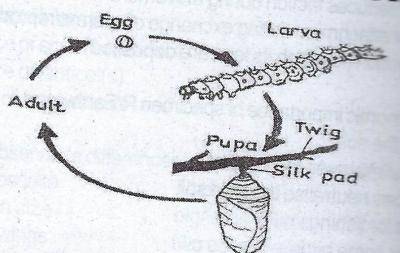The content is just an excerpt from the complete note for SS 2 First Term Agricultural Science Lesson Note – Plant Nutrients and Nutrients Cycle. Check below to download the complete PDF
WEEK 1 CLASS……………
SUBJECT: AGRICULTURAL SCIENCE
CONTENT: PLANT NUTRIENTS AND NUTRIENTS CYCLE ETC.
- Macro and micro-nutrients: Their functions and deficiency
- Factors affecting availability of nutrients
- Methods of replenishing lost nutrients and Organic Agriculture
SUB TOPIC 1: Macro and Micro nutrients
Nutrients are elements substance that provides nourishment for growth, development, metabolism and general well – being to plants. The most basic nutrient elements are carbon, hydrogen and oxygen, which are usually obtained from the air, soil or water medium in which the plant grows. All the other elements can be classified into two groups, macro and micro nutrients.
- MACRO NUTRIENTS/ESSENTIAL/MAJOR: Macro nutrients are mineral elements required by crops in a relatively large quantity. Examples of macro- nutrients are nitrogen, phosphorous, potassium, magnesium, calcium and sulphur.
- MICRO NUTRIENTS/TRACE/NON ESSENTIAL/MINOR: Micro nutrients, also known as trace elements are mineral elements required by crops in small quantities. Examples of micro nutrients are iron, manganese, boron, molybdenum, copper, zinc. Others appear to be helpful for the growth of certain species of plants. The functions and deficiency symptoms of these nutrients are summarized below.
SOURCES, FUNCTIONS AND DEFICIENCY SYMPTOMS OF PLANT NUTRIENTS.
| NUTRIENT | SOURCES | FUNCTIONS | DEFICIENCY SYMPTOMS |
| Nitrogen (N)
|
*Decay organic substances
*Use of nitrogen fertilizer. *Fixation through thunder storm. *By nitrogen fixing micro-organisms in leguminuous crops like cowpea
|
*Forms an essential constituent in all plant protein, enzymes hormones and potassium.
*it is essential for plant growth and makes vegetables to look more succulent. *it helps to increase grain six in cereals and promotes carbohydrate synthesis *it promotes the uptake of other nutrients such as potassium and phosphorous. *it helps in chlorophyll formation making leaves to appear deep green N.B. Excess nitrogen may lead to excessive vegetative growth *delay plants maturation and fruiting. *make plant stems to become weaken and bend over (to lodge) may decrease resistance in grains. |
*stunted growth, older leaves turn yellow or have chlorosis
*Leaves drop prematurely, poor formation of flowers and fruits. *weak slender stems |
| PHOSPHOROUS (P)
POTASSIUM (K)
|
*Organic matter decomposition.
*added directly to soil component of fertilizer
*decaying organic substances *application of wood ash. *uses of potash fertilizers |
*it is essential in cell division because it is part of the cell nucleus
*it helps in root development, flowering fruit and seed formation *encourages and quickens ripening of fruits *it increases disease resistance in plants *improves the palatability of vegetables and forage grasses. *it encourages fibre production especially in cereal crops, reducing the plant tendency to lodge. *it is a major constituent of plant tissues *necessary for manufacture and translocation of carbohydrates. It is required for the formation of chlorophyll and grains especially in cereals and tubers in tuber crops
*helps in activating essential enzymes reactions in plants *aids translocation of sugars from one part of plant to areas where they are needed. *helps to increase plants resistance to bacterial and fungal attack. *Helps to neutralize organic acids especially in young plants. *Promotes nitrate uptake from soil. *Promotes water circulation and regulation in plants |
*poor root development
*stunted growth *purple coloration of leaves in maize *delay in flowering fruiting and ripening *lack of resistance to lodging and disease *Immature fruit drop
*it causes weak slender stems *it causes margin of leaves to turn brown scotched and rough *premature leaf drop *it causes delayed growth of plants |
| CALCUIM (Ca) | *organic residues
*application of liming materials such as calcium carbonate, calcium phosphate minerals |
*it strengthens plant cell wall with calcium pectate
*it is needed for normal growth of root tips. *It helps to reduce soil acidity. *it aids in the translocation and deposition of carbohydrates and proteins in seed and tubers *it helps in improving soil aeration water in filtration and retention *It improves the soil PH so that nitrogen fixation can be carried out *controls the field toxicity of Aluminium manganese and sodium ions. |
*weakness in plant’s stem
*stunting of the root system *pale yellowing of leaves *presence of some minerals at toxic levels e.g Aluminium iron etc. |
| MAGNESIUM (Mg) | *it is added directly into soil in the form of liming material such as dolomite (calcium magnesium carbonate).
*Through organic residue. |
*it is a constituent of chlorophyll and necessary in plants synthesis
*it is required in normal cell divisions in plants *it is important in enzymes activation *It helps in the transportation of phosphate and fruit formation in plants *it helps in the synthesis of oils as in oil palm *it works with calcium to reduce soil acidity
|
*it slows down photosynthesis
*stunted growth *white coloration of leaves between veins of older leaves. * premature leave-fall |
| SULPHUR (S) | *decaying of organic substances
*addition of fertilizer such as ammonium sulphates super phosphate
|
*it forms parts of some amino acids and so, helps to build protein
*it activates hormones and chlorophyll formation *it is required for carbohydrate metabolism and nitrogen fixation by leguminous plants. |
*stunted growth poor rate of photosynthesis
*yellowing of leaves *slows down carbohydrate synthesis in plants. |
| MICRO-NUTRIENTS | |||
| IRON (Fe)
|
*decayed organic matter
*rock minerals |
*it is necessary for chlorophyll formation
*it is used for protein synthesis. *it promotes enzymatic oxidation and reduction reaction |
*chlorosis – the leaves becomes pale green |
To gain full access to the note: DOWNLOAD FILE



